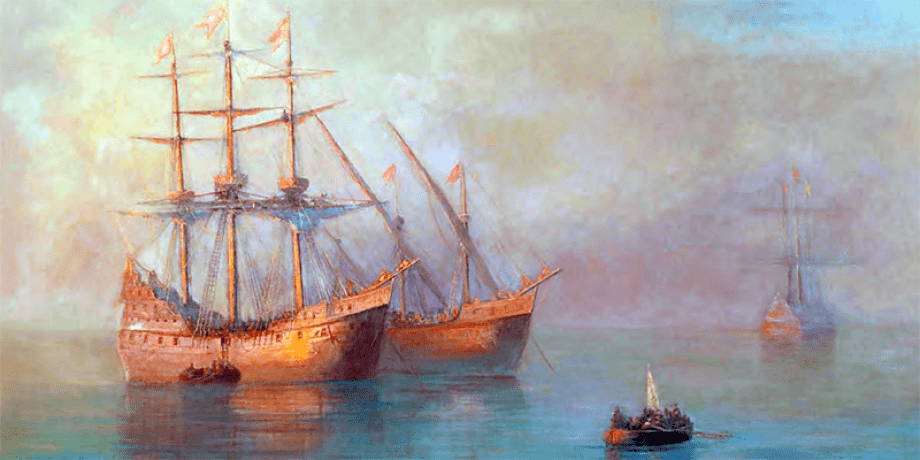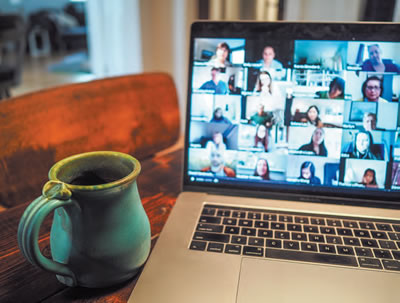
In 1492, Columbus sailed the ocean blue in search of treasured spices from the Philippines, but in a lost state managed to bump into the Americas and pick up buckets of gold instead. This marked the beginning of centuries of pillage and slavery with the beneficiary the royal coffers of mother Spain. Franciscans, Dominicans, Jesuits and others followed the plunder trail, bringing the Good News of a God that loves all creation, as portrayed in our scriptures.
Five hundred years later, to celebrate the anniversary of the first announcement of the Word, the Conference of Religious of Latin America commissioned biblical scholars to develop a Popular Reading of the Bible course using people’s own life experience as a starting point. This led to a personal and grounded encounter with the Word, who is life, and gave meaning and hope to all. The bishops gave a guarded assessment, as they judged the methodology as lacking solid theological foundations. However, the Montfort Missionaries launched the program in their parish in Lima, Peru, and it quickly went national, resulting in the offering of two-week-long courses each year to people from all over Peru.
 A retreat center in Lima hosted the courses and, over the years, many Columban missionaries participated in the mixture of serious study, copious sharing and creative drama. I had the joy of being part of a team taking the course, venturing into the interior of the country to share the experience. We went to Iquitos in the jungle, Cajamarca in the mountains, and Chimbote on the coast. All were different realities with different responses.
A retreat center in Lima hosted the courses and, over the years, many Columban missionaries participated in the mixture of serious study, copious sharing and creative drama. I had the joy of being part of a team taking the course, venturing into the interior of the country to share the experience. We went to Iquitos in the jungle, Cajamarca in the mountains, and Chimbote on the coast. All were different realities with different responses.
In 2005, a group of us decided to introduce the course in the shantytowns on the north side of Lima. Using the facilities of the Columban Mission Center, we gathered our team from among local people who had already participated in the course. Sr. Patricia, who had lived and studied in Brazil, prepared a three-year program with the team. This proved to be heavy going, as it required extensive reading, then prioritizing and developing plans for each gathering.
Invitations were sent to all parishes and Church groups on the north of the city, and we estimated that some 60 would show up. However, when 203 signed on for the first gathering, we were left scrambling with a shortage of materials, desks and group leaders. However, not everyone persisted, as some wanted only talks, while others felt uncomfortable with the demands of group sharing. Nevertheless, we stuck with the tried methodology believing that we remember and value what we discover ourselves more than what is prepared and served up for us. That process began 13 years ago and, over the years, 67 people completed the full three-year course.
Then in February 2020, COVID-19 made its devastating presence felt in Peru. In March, a nation-wide lockdown was imposed, producing the inevitable scramble for facemasks and toilet paper. The young could isolate, as schools closed, and elderly people mostly did not need to go out, but the majority of adults had to choose between going to work or starving at home.
Consequently, after two years, 200,000 Peruvians have died and six million contracted the virus, the worst per capita rating in the world. Medical services floundered and at one stage, more people died on the paths leading to emergency wards than in the hospitals. Because the coronavirus was affcting everyone, the Bible group joined with some non-government organizations, municipalities, religious and social groups in a coordinated response to the catastrophe. Our contribution was to prepare and offr a weekly reflction on Zoom and Facebook to anyone who wanted some understanding of the situation arid find some way of coping with it.
We were all in this together, so each night began with a short presentation and sharing from both participants and the team on something inspiring, concerning, impressing, or depressing them.
This required a quantum leap for the social media illiterate, so the savvy did most of the groundwork and all material had to be prepared without the team coming together. The exits, videos, songs. and group work had to be supplied remotely, in between occasional blackouts and signal failures. Multimedia neophytes had a tough time. We were all in this together, so each night began with a short presentation and sharing from both participants and the team on something inspiring, concerning, impressing, or depressing them. A text showing how Jesus responded to similar situations in His time was presented, and the group bonded to draw hope and direction from the sharing and prayer.
At one meeting, the main issue might be hunger: real or threatened. We would watch and listen to Jesus feeding the hungry 5,000 plus. Finally, we might look at the common pots that had surfaced in so many places around the city as people cooperated to avoid widespread starvation. The participants could share their misgivings and their experience of these community responses. Thethemes offred were the petitions in the Our Father, the Beatitudes in Matthew, the kingdom parables, and the healing hands of Jesus. Most nights between 60 and 80 people related the Word to their lives and many received encouragement and support.
What to offer during 2023 is the challenge for the team now. The ravages of the pandemic will continue, and there will be a lot of healing needed.
One idea that has gained some traction is a study of the four songs of the Suffering Servant in Isaiah. The prophet had seen the suffering of his people in their exile in Babylon and offered a reflection that made some sense of their suffering. He saw that from this people, who were suffering so much, new life would come, and they would be a source of blessing for the world. There suffering would not be in vain.
Another offering may be the work of the Spirit in the life of Jesus and of ourselves. The spirit gives life, understanding and community. The challenge for now is how to present this theme and, more importantly, make it accessible to those who need it most.
Columban Fr. John Hegarty lives and works in Peru.